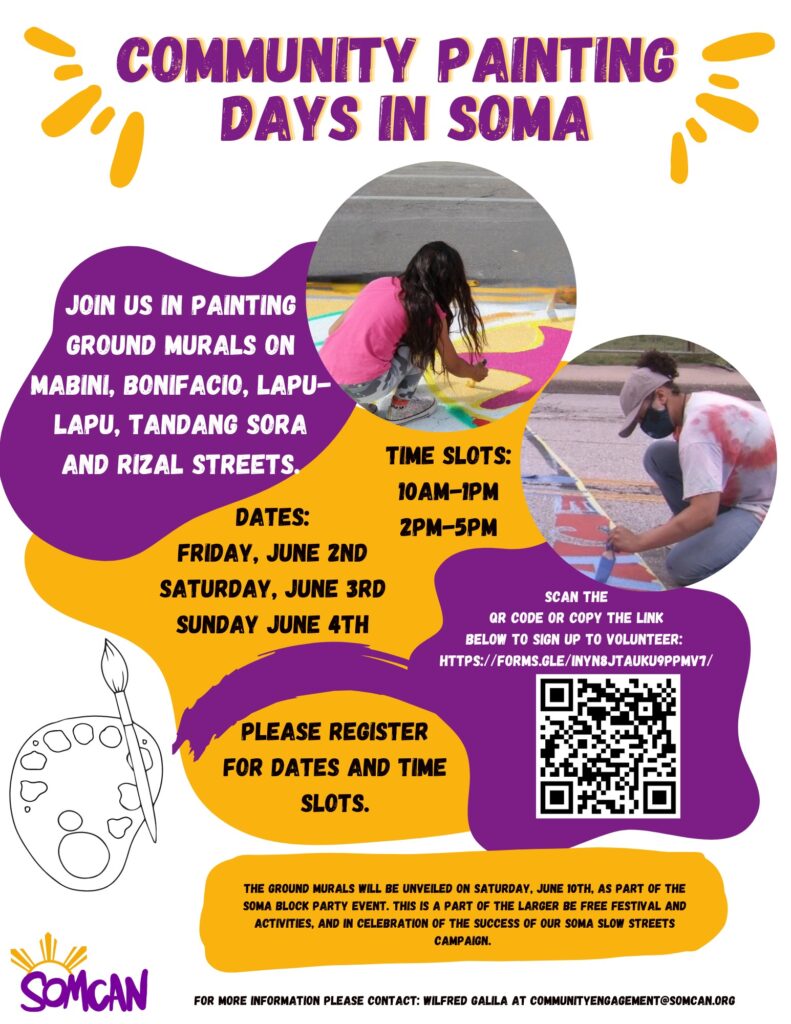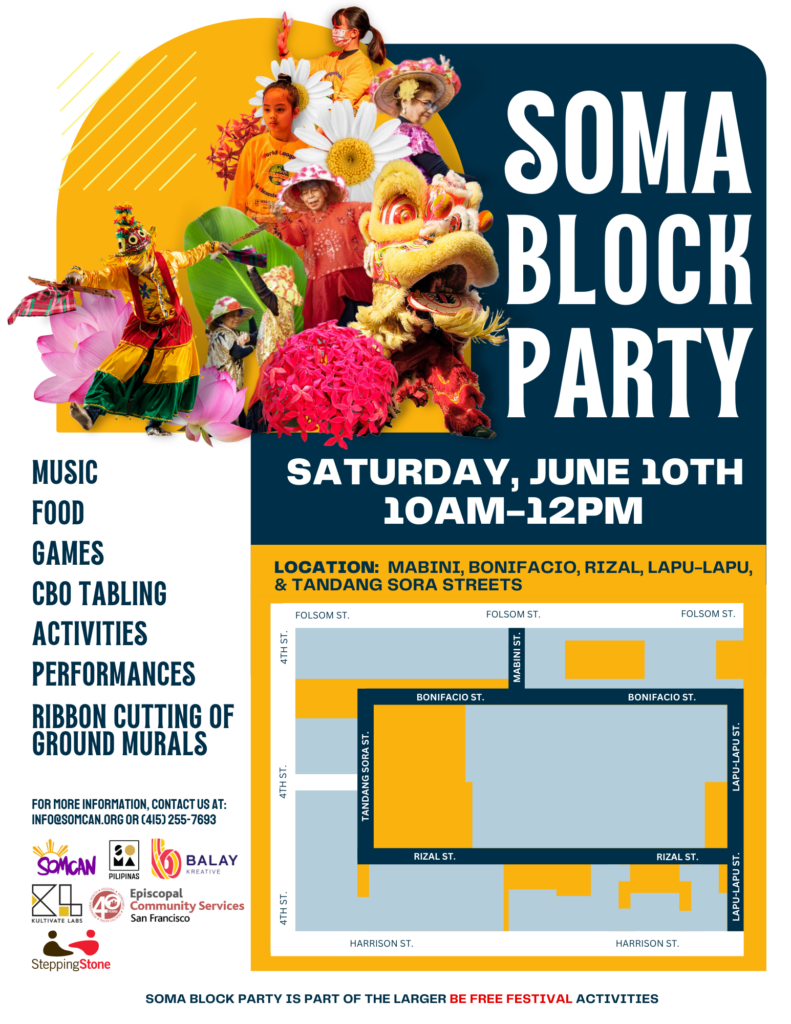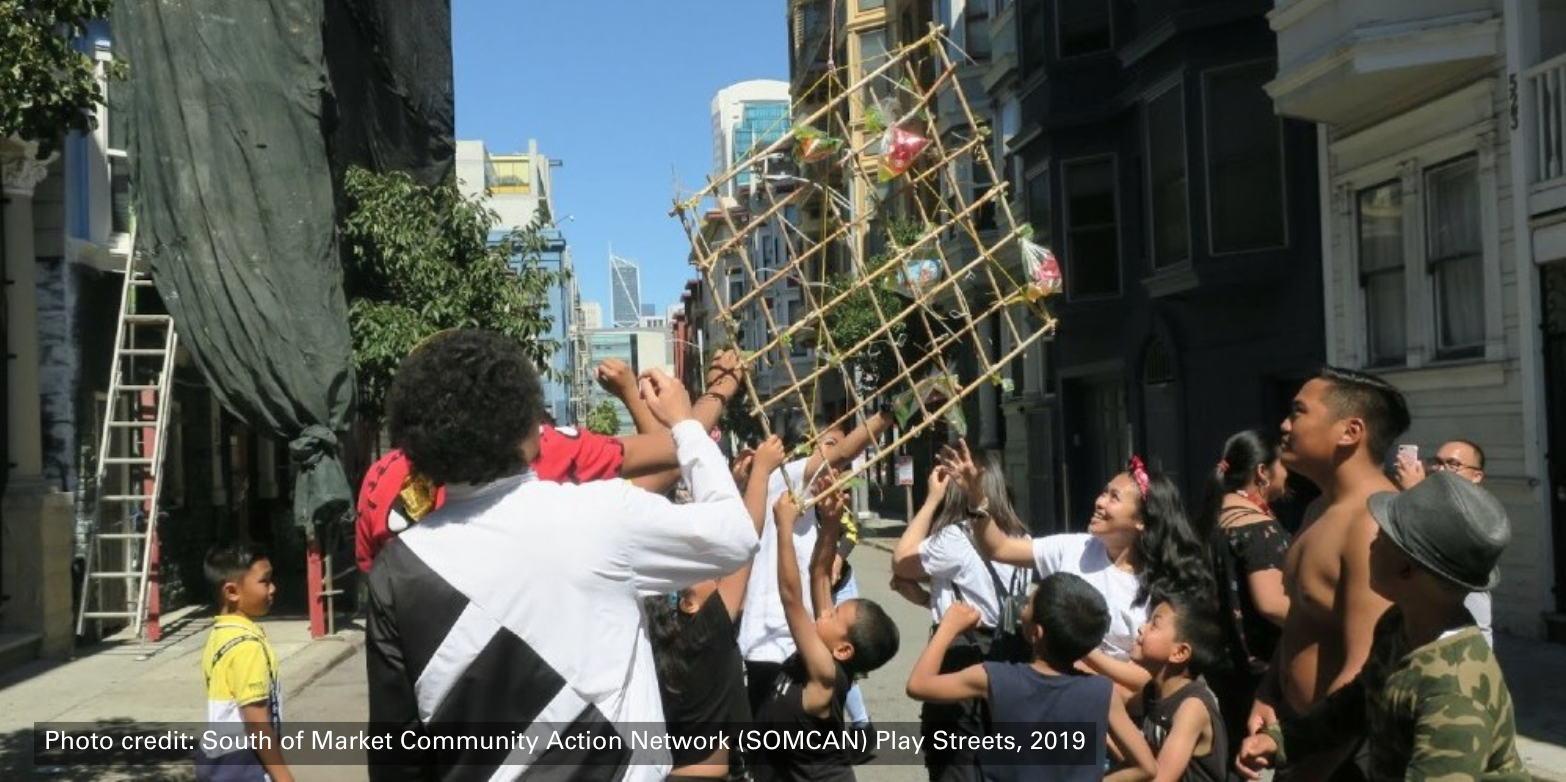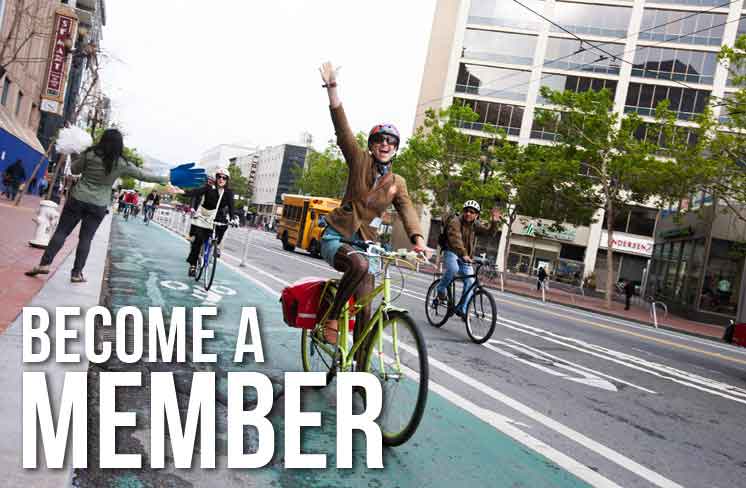On May 16, the SF Municipal Transportation Agency’s (SFMTA) Board of Directors voted for a third time on SoMa Slow Streets. This time, the board voted to make it a permanent part of the program after removing it off the list of 18 Slow Streets adopted in December 2022.
This vote came two months after many times that we, SoMa residents, and community based organizations turned out to give public comment to instate SoMa Slow Streets as permanent.
The South of Market has the most protected bike lanes out of all of the City’s neighborhoods; however, almost all of the main streets remain on the City’s Vision Zero High-Injury Network. The neighborhood is the entrance and exit for major freeways like 280 and 101. Prior to redistricting, a city report showed District 6 has the least amount of park space per resident in the entire city. Most residents don’t have backyards and oftentimes will congregate on sidewalks.
At the very beginning of the pandemic, in a time with social distancing and crowded sidewalks, there was a dire need for people in SF to have more space outdoors to safely gather and move all over the city — but especially in places like SoMa and the Tenderloin. Alongside SoMa organizations, we sent the SFMTA two letters in July 2020 and April 2021 to implement tools like Slow Streets in the South of Market. Lapu Lapu, Mabini, Rizal, Tandang Sora, and Bonifacio Streets between 4th and 3rd Streets and Folsom and Howard Streets were approved as Slow Streets on April 6, 2021 — over a year after the initial program rolled out.
Leading up to the April 6, 2021 SoMa Slow Streets vote, a 78-year old senior was struck and killed by a person driving a car a stone’s throw away from the proposed Slow Streets. Antonio Durano was a low-income Filipino senior who lived on Rizal Street and frequented local community organizations for services and the food bank. Durano’s preventable death sparked outrage from local advocates during public comment and showcased the importance of why street safety improvements and programs like Slow Streets are important to implement equitably. Due to these circumstances, the approval of SoMa Slow Streets hardly felt like success to us and local advocates but were excited to see the space for community events and the food bank.
We were all surprised when SoMa Slow Streets didn’t make the cut to be included in the permanent program in December 2022 and were even more confused about SFMTA’s reasoning to keep the materials in place but to remove it from the list because it didn’t connect to the bicycle network. For a third time, the local community turned to public comment on March 21, 2023 to solidify SoMa Slow Streets as a permanent part of the program and won on May 16.
Earlier this year, SOMCAN, in partnership with us and SF Parks Alliance, hosted a number of community meetings with seniors who lived along the Slow Streets on how we could better activate and program the area. Residents wanted to see activities like street murals and regular block parties, and shared wanting better signage and sturdier materials to deter vehicles. Most importantly, residents and community based organizations want to see more Slow Streets and want investment from the city to prioritize pedestrian safety.


We are exhausted by how long and eventful of a process it took to get here. After a long multi-year battle, we are excited that SoMa Slow Streets is finally getting the love, attention, and investment it deserves. This Friday, Saturday, and Sunday SOMCAN needs volunteers to help paint murals on every street in SoMa Slow Streets! Come celebrate SoMa Slow Streets with us officially at the SoMa Block Party on Saturday, June 10th, 2023.


